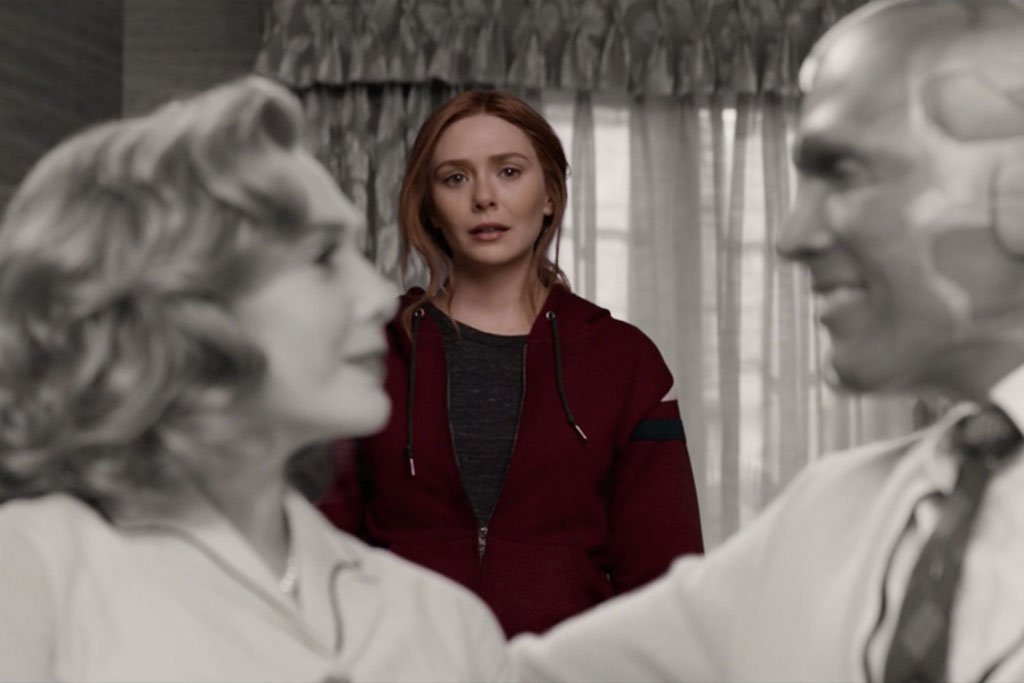Table of Contents Show
The line, said by Vision in a flashback, “What is grief, if not love persevering?” (( “Previously On.” WandaVision, season 1, episode 8, Marvel Studios, 26 Feb. 2021. Disney+, https://www.disneyplus.com/video/ebaaf404-b012-4a35-a4bd-0d5d4f32ccd0. )) struck a chord with WandaVision viewers worldwide and opened a floodgate of emotional tributes. It reflects not only on the show’s themes of grief and love but brings attention to the often-overlooked aspects of the titular characters’ early relationship.
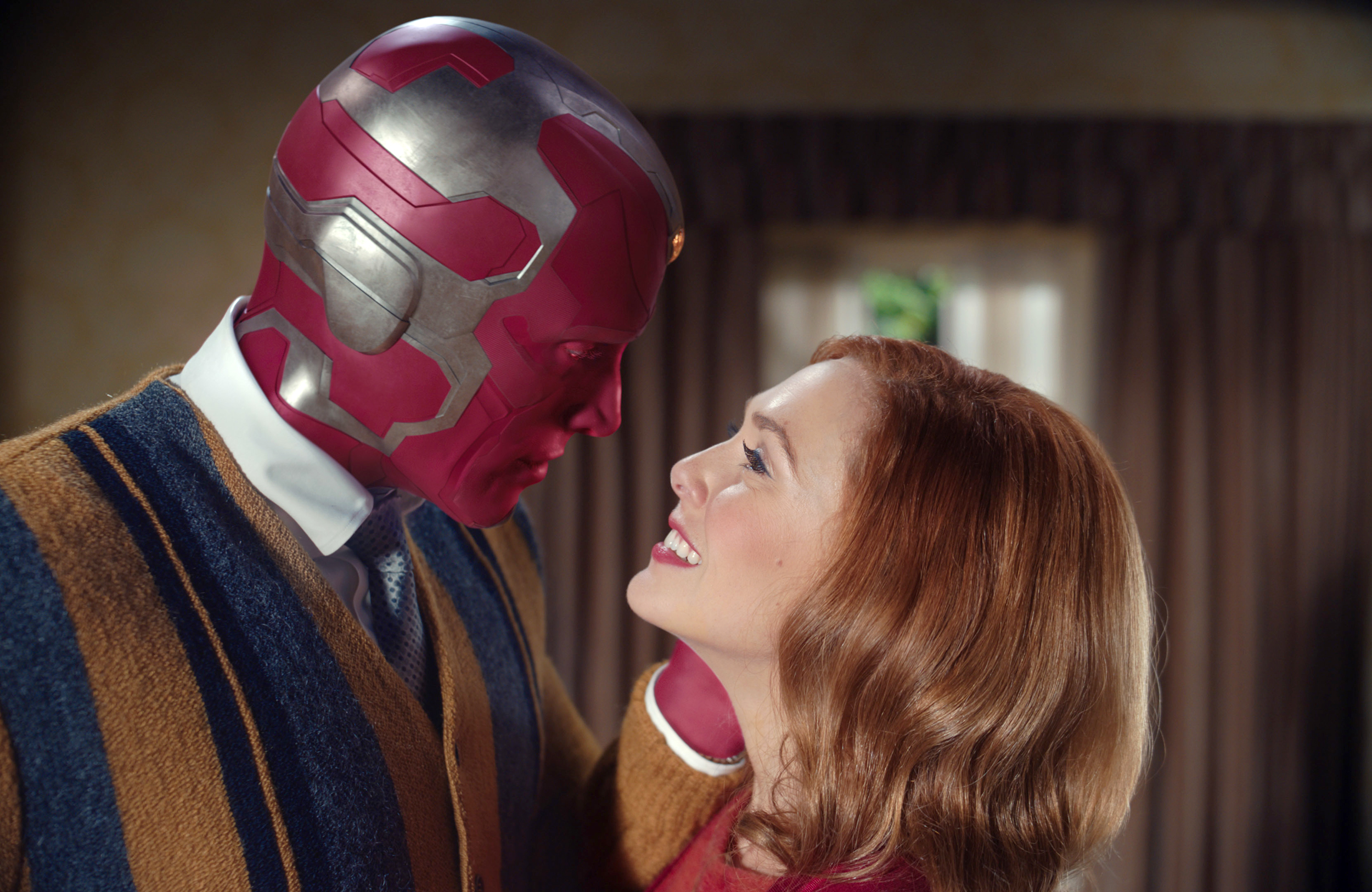
WandaVision’s penultimate episode “Previously On,” tells a story of loss and pain through flashbacks of Wanda Maximoff’s (Elizabeth Olsen) life: the death of her parents, brother, and lover Vision (Paul Bettany). For the first time, the Marvel Cinematic Universe provides further clarity into Wanda’s origin and the consistent tragedy its narrative has inflicted upon her. But it also did something rare — it acknowledges the amount of death and loss present in the past Marvel films.
Previously On Marvel…
In past Marvel films, characters’ deaths are often treated as simple plot devices, offering few opportunities to display the surviving cast’s grief. Loki and Pietro Maximoff are among these characters who were never properly memorialized within the context of their films. Loki (Tom Hiddleston) is killed at the start of Avengers: Infinity War rather unceremoniously, and nowhere between Infinity War and Avengers: Endgame does Thor (Chris Hemsworth) give him a funeral. Pietro Maximoff (Aaron Taylor-Johnson), Wanda’s brother, is also never fully grieved despite risking his life for Clint Barton’s “Hawkeye” (Jeremy Renner).
This particular treatment from the MCU knows no discrimination when it comes to its female characters. In Avengers: Endgame, Natasha Romanoff’s “Black Widow” (Scarlett Johannson) sacrifices her life to get the Soul Stone, aiding in the survival of the universe. It would be expected that she is properly memorialized during the film’s duration, but, instead, Wanda and Clint speak about her for only 45 seconds. Gamora (Zoe Saldana) is killed by her father Thanos (Josh Brolin) in exchange for the Soul Stone as well, and although he claims her death was his greatest sacrifice, his grief is also only momentary.
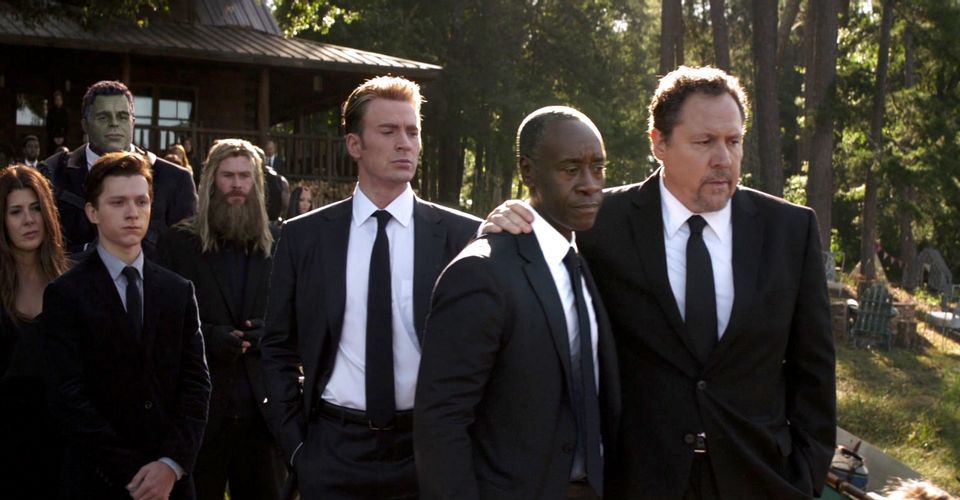
These beloved characters don’t have memorials or even moments for their friends and family to discuss their lives once lived. Therefore, the viewers are left with little context as to who these characters were outside of their heroic adventures. To audiences, they are unrelatable pawns whose deaths evoke little emotion or understanding. This lack of reflection in the film is only made more prevalent by the death of Tony Stark’s “Iron Man” (Robert Downey Jr.). Although his death receives a proper funeral with the majority of the cast present — a grave difference from both his female and male comrades — the scene is more for show than sadness. His life as a white, wealthy man in the film is marked by this occasion.
Yet the scene is brief, with very few characters openly discussing or displaying their feelings about Tony’s passing. They are stone-faced and eerily composed. Death in the MCU is a plot device. The consistent disregard for emotional and even vulnerable moments removes the MCU characters from their humanity. Their relationships with each other are rarely explored before or after their deaths. Rather, death often drives the protagonists toward heroism, seeking revenge or taking on a sense of personal responsibility for their loved ones’ deaths.
Addressing The Reality Of Grief
Wanda Maximoff is no stranger to the persistent death and loss within the MCU. The eighth episode of WandaVision consequently follows the grief and pain Wanda feels from having to kill (and then witness again) the death of Vision in Avengers: Infinity War. This particular episode reveals that Wanda went to the Sentient World Observation and Response Department (SWORD) headquarters looking to bury Vision’s body and to give herself a sense of closure. When she is denied the request for burial, she approaches his dismembered body and remarks “I can’t feel you” (( Russo, Anthony and Russo, Joe, directors. Avengers: Infinity War. Marvel Studios, 2018. )). Wanda recognizes his death as a reality but cannot emotionally come to terms with it.
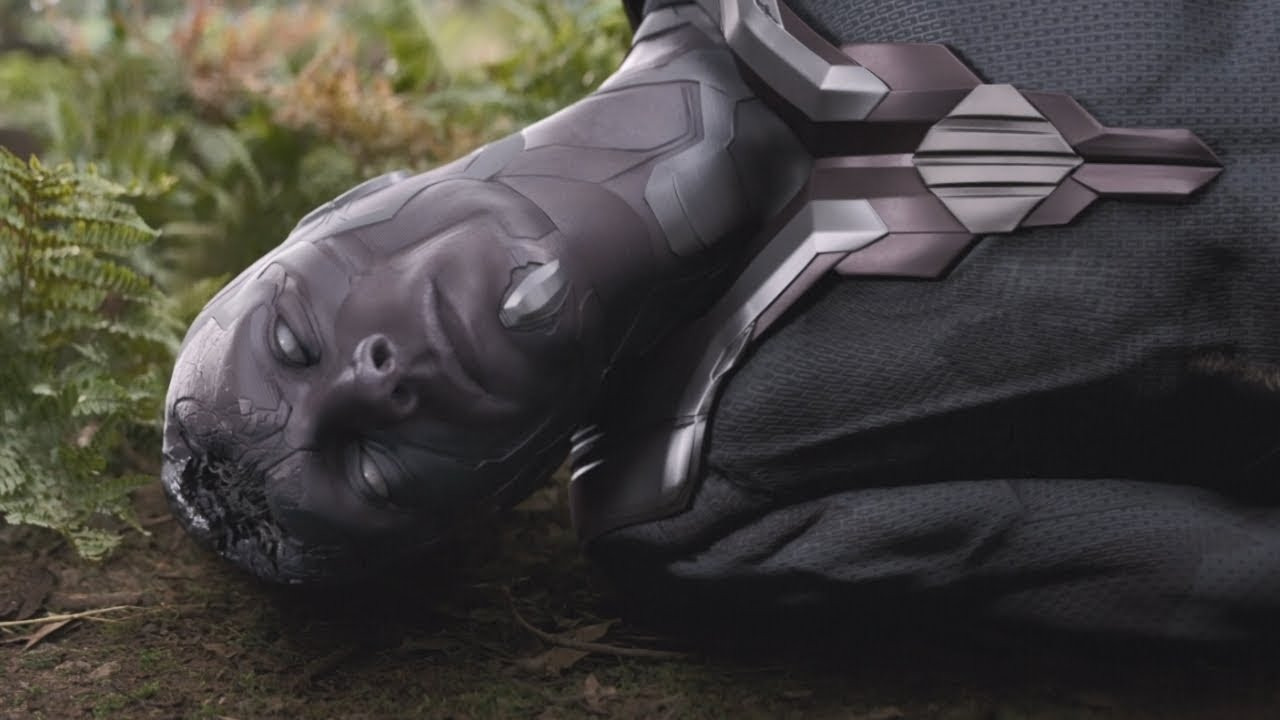
At no point during Wanda’s visit to SWORD are any of the other Avengers seen or mentioned. While it would be assumed that, over the years, Wanda has developed a friendship with some of her team members, it appears that they have left her to her own devices with no support. Much like Marvel has in years past, they have ignored the reality of her grief. Without proper closure and support from the remaining Avengers, Wanda’s magical powers overwhelm her and create a false world where her grief is buried beneath her love of sitcoms.
The majority of the episode focuses on the past and sinks into Wanda’s psyche. Agnes (Kathryn Hahn) — later revealed to be a witch named Agatha Harkness — acts as a therapist in an attempt to get to the bottom of Wanda’s immense power. She opens magical doors to Wanda’s past, forcing her and the audience to confront the reality of the MCU. The episode rewrites past films to address the existence of war and death.
Television Makes Us Think
The average Marvel film is around two hours, and much of this time is filled with action scenes, quirky dialogue, and hidden easter eggs. So much is crammed into the films that there is almost no time to let the characters fully develop as people — not just superheroes. WandaVision focuses on the moments that audiences wished they had seen in The Avengers: Age Of Ultron, reinvigorating the film with new life. Wanda and Pietro are given more complex backstories that bring reason and nuance to their decision to become Hydra volunteers. Not only does this improve upon the lore in Age of Ultron, but it also gives the audience more time to understand Wanda.
WandaVision takes the near six hours of its running time to focus only on Wanda’s history. While film often takes us down a straight and narrow path for its story, television can trail off and lean further into interesting ideas or plot lines. The show takes its time to breathe and lets the characters tell their own stories. Each episode delves further into Wanda’s feelings either through hidden messages — like the commercials that reference important moments from her life — or through the other characters, such as when Monica Rambeau (Teyonah Parris) explains feeling Wanda’s pain while under mind control.
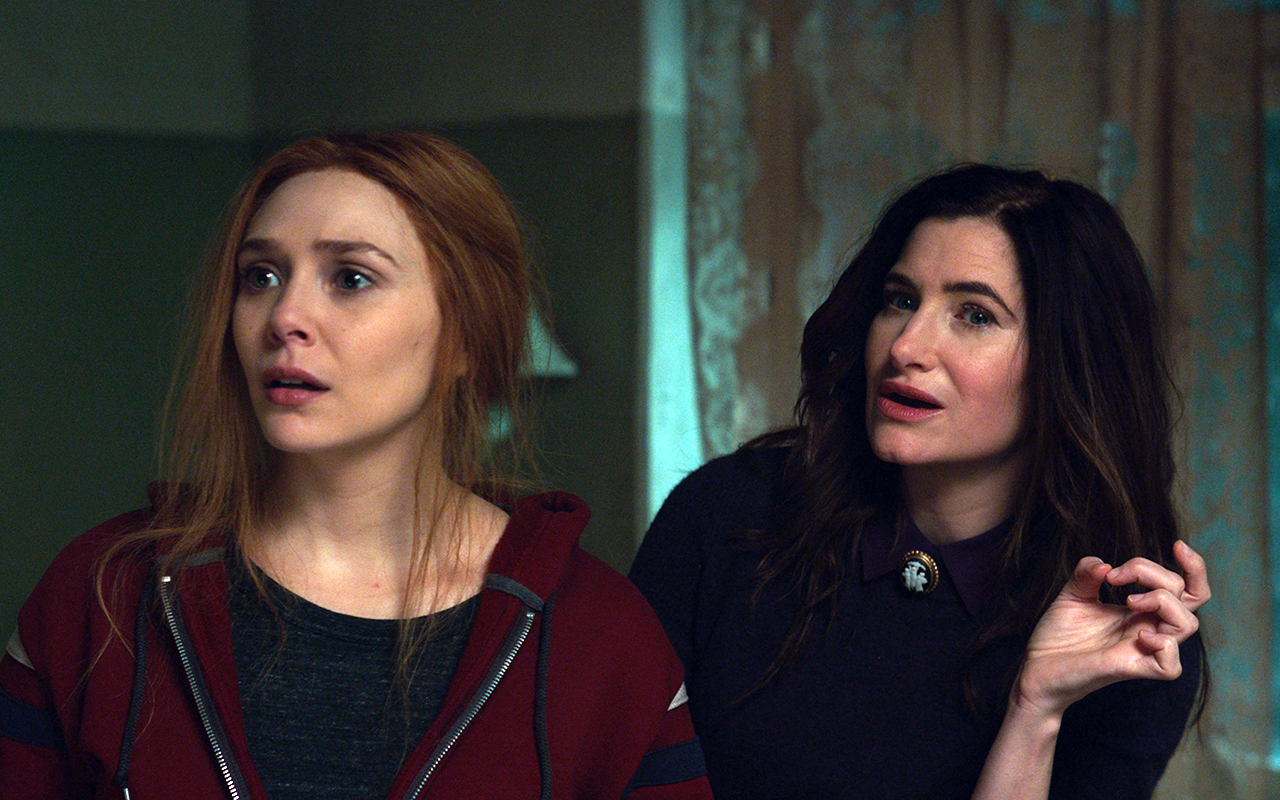
WandaVision relies on the sitcom as a framing device in order to pull from varying genres: comedy, drama, and action all take center stage to tell the story. Unlike film, television has the opportunity to explore the benefits of genre-blending. The idyllic and quirky moments of the 1950s episode “Filmed Before A Live Studio Audience” stand to show Wanda’s desire for simplicity and family, while the 1980s inspired “On A Very Special Episode…” also demonstrates the value she places on family. This further attention to genre also extends to characterization.
“Breaking The Fourth Wall” uses a parody of the mockumentary style by positioning the characters to speak directly to the audience, making their feelings and intentions known. These instances of genre-blending drop Wanda and Vision in a variety of situations and thus give them space to breathe as unique and relatable characters, an opportunity they have too often been denied.
Moving Forward
The “Series Finale” provides Wanda with the sense of closure that she has been looking for throughout the course of her MCU appearances. Having come to terms with Vision’s death and recognizing her perfect reality is a false one, she allows the barrier of her world to fall. Her emotional closure is one that also closes down her imaginary world. In their final moments together, Wanda and Vision say their goodbyes once again. When Vision says, “We have said goodbye before, so it stands to reason …” Wanda is able to respond with, “We’ll say hello again.” (( “Series Finale.” WandaVision, season 1, episode 9, Marvel Studios, 5 Mar. 2021. Disney+. )). This last encounter signals she has come to terms with her grief. The moment is slow, with no hidden easter eggs or ulterior motives. It simply ends the story. But through the sadness, a promise is made to Wanda and the audience: everything will be okay.
For the first time in the MCU, true grief is given screen time. Not just a passing moment of anger, retaliation, or silence, but several episodes based around a character’s complex emotions. WandaVision offers a small glimpse into the real world of a superhero and all of the tragedy that comes with great responsibility. Many fans have even theorized that the episodes are representations of the five stages of grief.
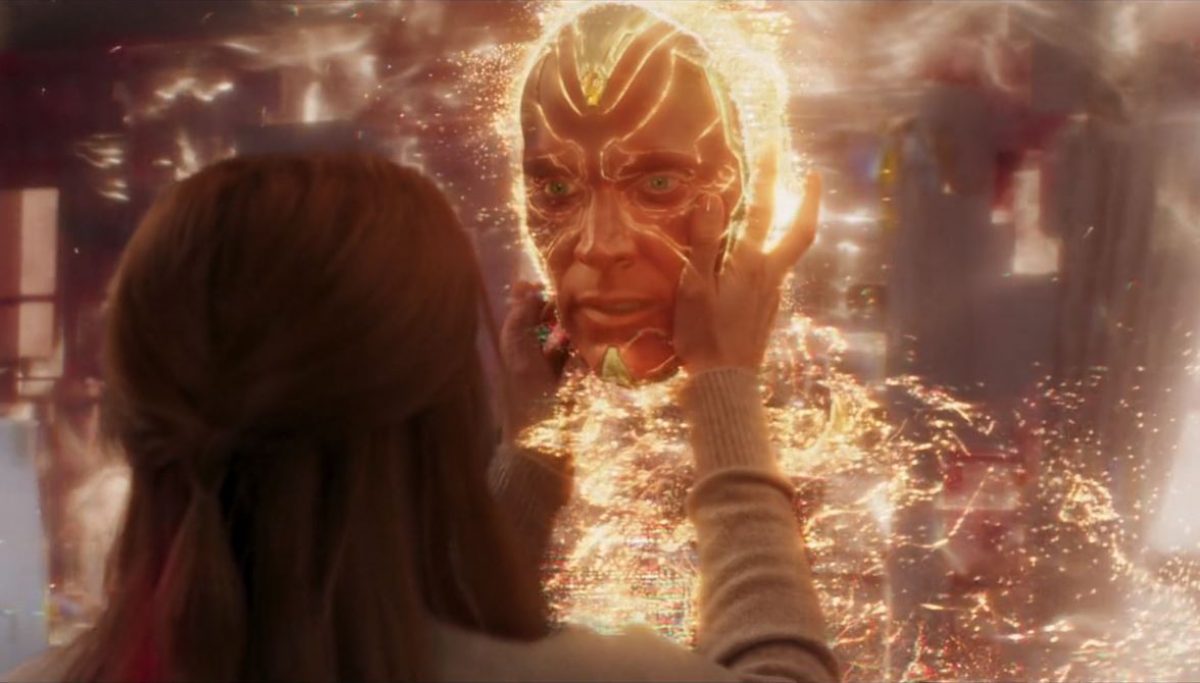
Of course, Marvel has much further to go in terms of its grief representation. The show solely relies on the death of Monica’s mother, Maria (Lashana Lynch), in Captain Marvel in order for Monica to sympathize with Wanda. However, the two don’t spend any time acknowledging death or comforting each other by the end of the series. Monica’s grief is inadvertently treated as lesser than Wanda’s. Race also plays a role in Marvel’s grief representation, with Wanda being White (though in the comics she is Romani and Jewish) and Monica being Black. Thus, white characters are presented as more important than their Black counterparts.
Throughout WandaVision‘s nine episodes, the audience accompanies Wanda as she attempts to find closure for her trauma, allowing us to witness the grieving process through the lens of the superhero genre. Marvel has finally embraced the reality of emotional hardships, with Wanda’s responses and feelings all too familiar for anyone who has ever experienced the loss of a loved one. Much like us, our heroes feel pain and suffering — and like them, we can survive.
